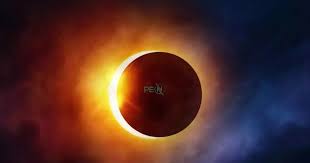
Breaking News
 X CEO Yaccarino Stunned, Musk Intrigued After Reading Bombshell Report On Far-Left NGOs...
X CEO Yaccarino Stunned, Musk Intrigued After Reading Bombshell Report On Far-Left NGOs...
 In Latest Blow To European Democracy, Judge Rules Marine Le Pen Ineligible To Run...
In Latest Blow To European Democracy, Judge Rules Marine Le Pen Ineligible To Run...
 Kremlin goes into damage control, insisting 'work is underway' despite Trump getting...
Kremlin goes into damage control, insisting 'work is underway' despite Trump getting...
 SpaceX set to launch first-ever crewed mission to orbit North and South poles
SpaceX set to launch first-ever crewed mission to orbit North and South poles
Top Tech News
 Watch the Jetson Personal Air Vehicle take flight, then order your own
Watch the Jetson Personal Air Vehicle take flight, then order your own
 Microneedles extract harmful cells, deliver drugs into chronic wounds
Microneedles extract harmful cells, deliver drugs into chronic wounds
 SpaceX Gigabay Will Help Increase Starship Production to Goal of 365 Ships Per Year
SpaceX Gigabay Will Help Increase Starship Production to Goal of 365 Ships Per Year
 Nearly 100% of bacterial infections can now be identified in under 3 hours
Nearly 100% of bacterial infections can now be identified in under 3 hours
 World's first long-life sodium-ion power bank launched
World's first long-life sodium-ion power bank launched
 3D-Printed Gun Components - Part 1, by M.B.
3D-Printed Gun Components - Part 1, by M.B.
 2 MW Nuclear Fusion Propulsion in Orbit Demo of Components in 2027
2 MW Nuclear Fusion Propulsion in Orbit Demo of Components in 2027
 FCC Allows SpaceX Starlink Direct to Cellphone Power for 4G/5G Speeds
FCC Allows SpaceX Starlink Direct to Cellphone Power for 4G/5G Speeds
1st solar eclipse of 2025 puts on stunning show for skywatchers around the world (photos)

This morning (March 29), during a partial solar eclipse, the moon bit off more than it could chew, taking a dramatic 'bite' out of the sun. From crisp crescent-shaped suns to the rare 'devil's horns' and 'double sunrise,' March's solar eclipse left skywatchers in awe — especially those in the right place at the right time.
A partial solar eclipse occurs when the moon partially covers the sun, leaving a glowing crescent. Globally, the eclipse began at 4:50 a.m. EDT (0850 GMT), with the maximum eclipse peaking at 6:47 a.m. EDT (1047 GMT). Skywatchers in parts of North America and Europe, and enjoyed the best views.
Unlike a total solar eclipse, the sun was never completely blocked, so observers needed solar viewing equipment such as solar eclipse glasses or special solar filters on their cameras, telescopes and binoculars to enjoy the sun safely.
This solar eclipse was especially memorable for me — it was the best one I've ever seen! Unfortunately, last April's total solar eclipse was a bust for me, and the U.K.'s weather tends to be uncooperative for celestial events, often hiding them behind thick clouds. But not today!
Armed with a kitchen colander, solar eclipse glasses and a pair of Celestron EclipSmart binoculars I enjoyed front-row seats to the marvelous solar show from Nottingham, U.K.
In the photo below captured by Andy Moran in Nottingham, U.K., a sunspot is visible in the upper left corner as the moon moves in on the right.
Meanwhile, at Stonehenge, the clouds in the sky slipped away just in time to offer great views of the eclipse over the ancient monument.
"Look how the skies have cleared up," astrophotographer Josh Dury said in a video update. "So lucky from England to have some of the best clear skies for this event."
The deep partial solar eclipse looked magnificent over the statue of Dano-Norwegian Lutheran missionary Hans Egede in Nuuk, Greenland in this photograph captured by Leon Neal.

 How Big Tech Plans To Read Your Mind
How Big Tech Plans To Read Your Mind AI, Nature & Legal Personhood
AI, Nature & Legal Personhood


